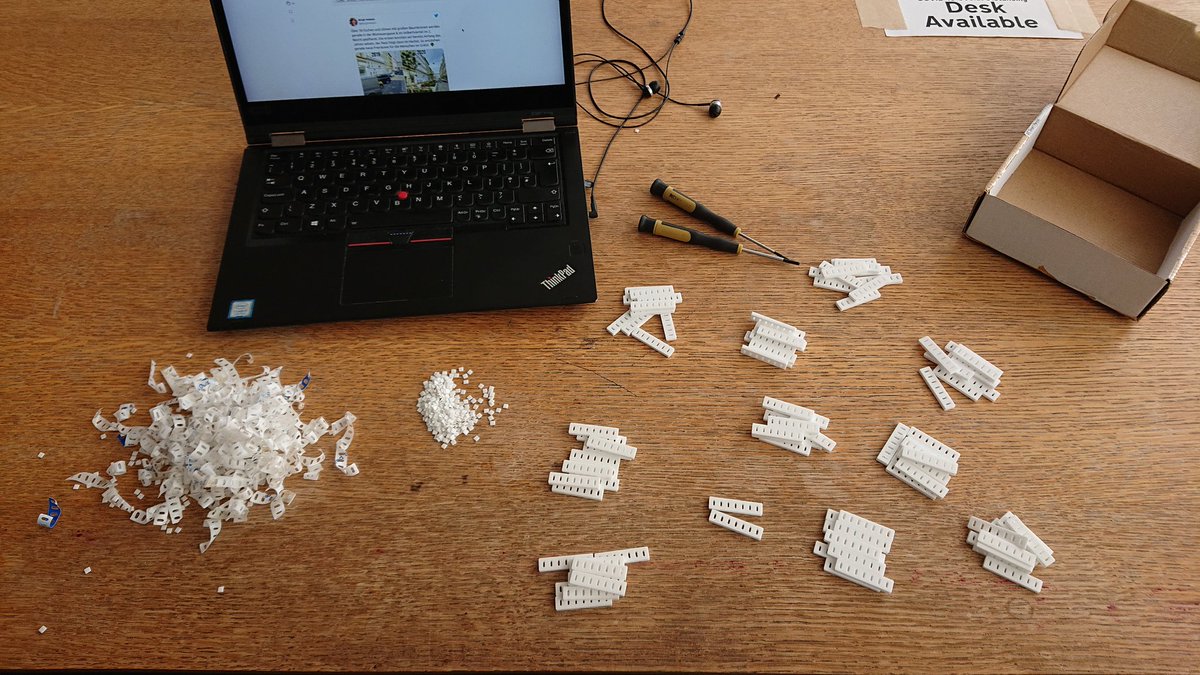This week there was a bit more chipping away at the Kicad PCB course notes, and some time with the DoES Liverpool laser-cutter, using up some of the waste acrylic from other users to make the shims that go on the Museum in a Box PCBs and hold the LEDs at the right height.

With a hundred shims (plus a few spares) cut, they were posted up to Glasgow ready to be fitted to the next batch of PCBs.
Then, despite claims a few weeks back that I should be focusing on closing out projects, I jumped headfirst into new product development.
Simon and I have been thinking about our joint Geometric Lights project of late.
We had considered submitting it for a bid for a town Christmas display, but weren't sure how much of the ancillary support (the Council tree team, electrical services, etc.) would be available, compared to Open Culture's deep local knowledge and networks here when we deployed it in Liverpool, and the budget wasn't generous enough to cover those eventualities.
However, it was a good reminder that we should do more with it. It's a shame to have it mostly in storage, but it's been tricky to find places to show it off. We're going to try pulling together a one-page explainer to better demonstrate what we can do with it.
About a quarter of the lights are hung on the wall of the events room at DoES Liverpool. Jackie and Julian have also been picking away at it from a software perspective, and looking at how to control all of it differently. Our recent flurry of activity has given them a nudge on it and last week they got a handful of them working driven with an ESP32 and the new-to-me open source WLED sofware.
For the original Christmas tree install all of the lights were powered from a single massive 240A power supply. That's great when all of the lights are installed together, but obviously doesn't work if you want to split them up. In the past we've talked about spreading an installation along a street, or in the windows of a collection of shops, but haven't had the budget to buy lots of power supplies.
I'm not quite sure why I'd discounted it in the past, but I realised last week that a PC power supply will put out enough power to run about 500 LEDs. I've also got a reel of ESP8266 modules sat in stock already, and the WLED software would take care of that side of things...
That got my new-product-ideas side of my brain all fired up. I did seriously consider parking the idea for now, as I'm well aware of my tendency towards new development as a way of avoiding the harder getting-projects-out-into-the-world, but decided to proceed for a few reasons:
- It opens up more possibilities for using the Geometric Lights, particularly over a coming winter where we'll need more things outdoors that raise our spirits.
- Most of the pieces—the software to drive them; prior design work I've done for using the ESP8266 modules; my stock of the actual ESP8266 modules—are readily to hand, so it shouldn't be a massive project.
- There's an initial "customer" of me for a batch of 30 or so boards, which makes it worth doing; and I can easily scale up from a handful more boards to hundreds, depending on how any add-on sales go.
- I already have links into the most obvious initial market for such a board, and sites like Tindie will give me an easy "shop front" there. So anyone who has a spare PC power supply knocking around can buy one of these boards and a string of Neopixels and set up some nice Christmas lights.
That last point gives a convenient deadline and urgency to the project. For it to be useful this festive season, I need to be shipping finished units at the end of November. Best get on with it.
